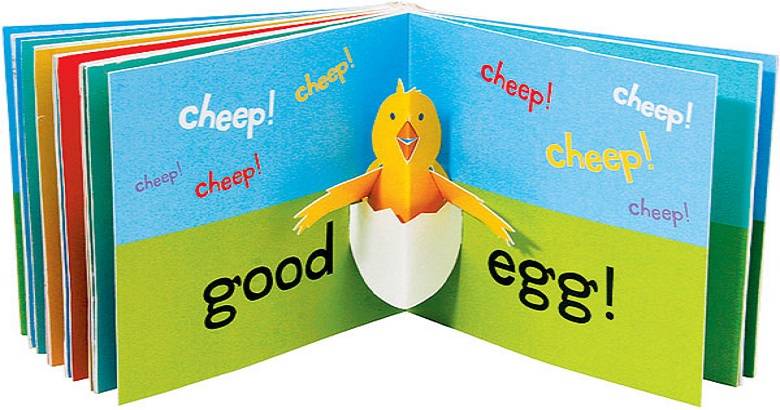Board books are a unique and popular format for children’s literature, designed to withstand the rough and tumble of early childhood. Creating and publishing a board book requires creativity, precise planning, and understanding the publishing process. Whether you’re an author, illustrator, or aspiring publisher, this guide will walk you through the essential steps to publish a successful board book.
What Is a Board Book?
A board book is a children’s book made from sturdy, thick paperboard. Each page is printed and laminated to ensure durability, making it ideal for young children who might chew, tear, or bend the pages of a regular book.
The Audience
Board books typically target infants and toddlers aged 0-3 years. This age group influences many aspects of the book, including the content, design, and materials used.
Conceptualizing Your Board Book
Choosing a Theme
The first step in creating a board book is selecting a theme. Consider simple, engaging, and visually stimulating themes that resonate with young children. Popular themes include:
- Animals: Realistic or anthropomorphic animals.
- Colors and Shapes: Basic colors and shapes for early learning.
- Daily Routines: Activities like bedtime, mealtime, or playtime.
- Numbers and Letters: Introduction to counting and the alphabet.
Writing the Manuscript
When writing for board books, simplicity is key. Keeping the text minimal and repetitive helps with cognitive development and language acquisition. Here are some tips:
- Use Simple Language: Short sentences and familiar words.
- Repetition: Reinforce learning and engagement.
- Rhythm and Rhyme: Create an enjoyable musical quality to read aloud.
- Interactive Elements: Encourage interaction by asking questions or including lift-the-flap features.
Illustrating Your Board Book
Finding an Illustrator
Illustrations are crucial in board books, as they capture the attention of young readers. If you’re not an illustrator, consider hiring one specializing in children’s books. Look for someone with a portfolio that matches the style you envision.
Illustration Style
Your illustrations should be bright, bold, and simple. Here are some considerations:
- High Contrast: Helps with visual development.
- Clear Images: Easily recognizable objects and characters.
- Consistency: Maintain a consistent style throughout the book.
Collaboration
Work closely with your illustrator, providing clear guidelines and feedback. The synergy between text and illustrations is essential for a cohesive book.
Designing Your Board Book
Layout and Pagination
Board books typically have 8-24 pages, with 12-16 being the most common. Plan your layout carefully:
- Page Count: Ensure it’s a multiple of eight for printing purposes.
- Text Placement: Consider where the text about the illustrations will be placed.
- Spread Design: Think about how the artwork flows across the spreads.
Typography
Choose a clear, readable font that complements your illustrations. The font size should be large enough for young children to see easily.
Safety Considerations
Ensure the design is safe for young children. Avoid small parts or elements that could be a choking hazard. All corners should be rounded.
Printing Your Board Book
Finding a Printer
Select a printer who specializes in board books. They will have the necessary equipment and experience to produce high-quality, durable books. Obtain samples to evaluate their work.
Specifications
Discuss the following specifications with your printer:
- Paperboard Quality: Thick and durable.
- Lamination: Glossy or matte finish to protect the pages.
- Binding: Rounded corners and strong binding to withstand rough handling.
Printing Costs
Board books can be more expensive than regular books due to the materials and printing process. Obtain quotes from multiple printers and factor in costs of printing, shipping, and additional services.
Marketing and Distribution
Creating a Marketing Plan
Develop a comprehensive marketing strategy to promote your board book. Consider the following:
- Online Presence: Build a website and use social media to reach parents and caregivers.
- Book Launch: Host virtual or in-person events to introduce your book.
- Reviews and Endorsements: Seek reviews from parenting blogs and endorsements from early childhood educators.
Distribution Channels
Choose your distribution channels carefully to reach your target audience:
- Online Retailers: Amazon, Barnes & Noble, and other online stores.
- Brick-and-Mortar Stores: Local bookstores, toy stores, and specialty shops.
- Libraries and Schools: Partner with libraries and early childhood education centers.
- Direct Sales: Sell at fairs, markets, and through your website.
Pricing
Price your board book competitively. Consider production costs, market rates, and your target audience’s willingness to pay. Typically, board books range from $5 to $15, depending on the complexity and quality of the book.
Building an Author Platform
Your author platform is your brand and reach. Engage with your audience through:
- Social Media: Share updates and behind-the-scenes content and interact with your followers.
- Email Newsletter: Build an email list to inform your readers about new releases, events, and special offers.
- Author Website: Maintain a professional website featuring your books, bio, contact information, and a blog to share insights and stories.
Selling and Promoting Your Board Book
Book Launch Events
Hosting a launch event can generate buzz and excitement. Ideas for a successful launch include:
- Storytime Readings: Partner with local libraries or bookstores to read your book to children.
- Interactive Activities: Include crafts or games related to the theme of your book.
- Q&A Sessions: Engage with parents and caregivers, answering questions about your book and the creative process.
Social Media Campaigns
Use social media platforms to promote your book. Effective strategies include:
- Teasers and Previews: Share snippets and illustrations leading up to the release.
- Contests and Giveaways: Encourage participation and engagement by giving away copies of your book.
- Collaborations: Partner with influencers, bloggers, and other authors to expand your reach.
Public Relations
PR can significantly boost your book’s visibility. Consider:
- Press Releases: Announce your book’s release to media outlets, parenting blogs, and book reviewers.
- Interviews and Features: Seek opportunities for interviews and feature articles in magazines, newspapers, and online publications.
- Book Reviews: Send copies to reviewers and ask for honest feedback and reviews on platforms like Goodreads and Amazon.
Navigating Self-Publishing vs. Traditional Publishing
Self-Publishing
Self-publishing offers complete creative control and higher profit margins. However, it requires significant investment and effort. Steps to self-publishing a board book include:
- ISBN and Barcodes: Purchase ISBNs and barcodes for your book.
- Distribution Platforms: Use IngramSpark or Amazon KDP to distribute your book.
- Marketing: Handle all aspects of marketing and promotion yourself.
Traditional Publishing
Traditional publishing involves submitting your manuscript to publishers who take on the costs and efforts of production and distribution. Benefits include:
- Professional Editing and Design: Access to experienced editors and designers.
- Wide Distribution: Established distribution channels to bookstores and libraries.
- Marketing Support: Assistance with marketing and promotion.
However, traditional publishing can be competitive, and you may have less creative control and lower profit margins. Research and approach publishers who specialize in children’s books and follow their submission guidelines carefully.
Managing Finances and Royalties
Budgeting
Create a detailed budget covering all aspects of the publishing process:
- Writing and Illustrating: Costs for hiring illustrators, editors, and designers.
- Printing: Printing and shipping costs.
- Marketing: Expenses for promotional materials, advertising, and events.
- Distribution: Fees for distribution channels and platforms.
Tracking Sales and Royalties
Keep meticulous records of your sales and royalties. Use accounting software or hire a professional to manage your finances. Understand the terms of your distribution agreements and royalty structures to ensure you’re fairly compensated.
Legal Considerations
Copyright
Ensure your board book is copyrighted to protect your intellectual property. In the United States, this involves registering with the U.S. Copyright Office. This step provides legal protection and helps prevent unauthorized use of your work.
Contracts
If you collaborate with illustrators, editors, or publishers, ensure all agreements are formalized in contracts. Outline the payment terms, rights, and responsibilities clearly to avoid misunderstandings.
Safety Standards
Adhere to safety standards and regulations for children’s products. This may involve testing materials and components to ensure they’re non-toxic and safe for young children.
Long-Term Strategy
Building a Backlist
A successful board book can pave the way for future projects. Continue creating new books to build a backlist, which can increase your visibility and sales over time.
Engaging with Your Audience
Maintain ongoing engagement with your audience through social media, live events, and your newsletter. Listen to feedback and incorporate it into future projects to meet your readers’ evolving needs and interests.
Continuous Learning
Publishing is an ever-evolving industry. Stay informed about trends, new technologies, and best practices by attending workshops, reading industry publications, and networking with other professionals.
Conclusion
Publishing a board book is a rewarding journey that requires dedication, creativity, and strategic planning. By understanding your audience, collaborating effectively, navigating the publishing process, and engaging with your readers, you can create a beloved board book that delights young children and their caregivers. Whether you choose to self-publish or pursue traditional publishing, staying passionate about your project is key.
Frequently Asked Questions
1. What is a board book?
A board book is a children’s book made with thick paper or cardboard pages bound to be durable for babies and toddlers. They focus on simple concepts using images and minimal text perfect for little hands.
2. How long should a board book be?
Most board books range from 10-26 pages. Keep the story straightforward with minimal words per page so it remains engaging yet brief for its target audience under 3 years old.
3. Do I need illustrations?
Yes, board books rely heavily on clear, colorful illustrations to carry the story since pre-readers can’t understand much text. Consider working with an illustrator if you can’t illustrate yourself.
4. Should I self-publish a board book?
For short print runs under 5,000, self-publishing may be more affordable. Large publishers need higher sales potential, so try submitting to smaller independent presses first.
5. How do I submit a board book proposal?
Include a 1-2 page overview highlighting the concept, target age group, estimated page count and sampleSpreadsheet.jpeg interior illustrations. Follow each publisher’s specific submission guidelines closely.






